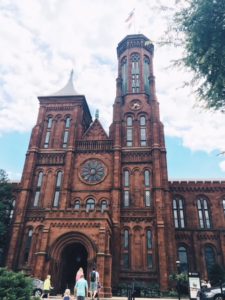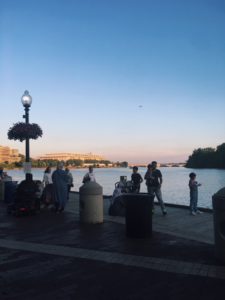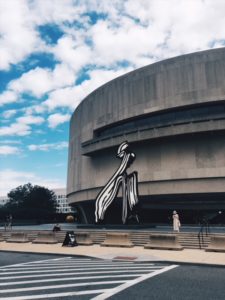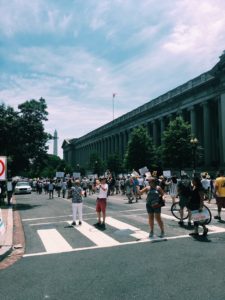I am officially half way through my internship and this week things at the Rodham Institute have started to pick up. I started off the week by going to the hospital and rounding with residents on the general medicine floor. The two doctors were presenting cases to their attending and giving him a rundown of what they presented with and how those patients were being treated. The four of us then proceeded and went into the rooms to talk to the patients, assessing their current state and talking to them about the next steps to recovery. For some, however, full recovery wasn’t possible. Two of the patients that we saw had severe neurological deficits, one patient had an anaphylactic reaction to something and the oxygen was cut off from the brain which resulted in crippling of the hands and neck. He could not speak and was unresponsive to questions being asked by the doctors. It was hard to see people in such awful conditions but it have me a glimpse into what doctors see on a regular basis and how some people don’t come back from accidents. In the afternoon I went down tho the gastroenterology clinic where I followed a medical student around as she went in to asses patients. The attending in charge and I talked about tips for applying to medical school and what to do in college to prepare myself.
The Summer Youth Employment Program (SYEP) started on Tuesday, the program exposes students to health careers. There are four girls who are here at the Rodham Institute for the summer and we had an orientation where we started our social impact project. This social impact project is being used to demonstrate how to improve the lives of groups of people, from the eyes of high school students. Students achieve this by educating the public about that they feel need to be addresses. We all collaborated and combined all of our ideas to come up with our research question; How is the achievement gap in high schools affected by underlying issues such as, substance abuse, food security, police brutality and homelessness? This projects opens the students eyes to the issues in their own city and those happening across the nation, it also teaches them how to write a research paper.
In the afternoon I went down to the pulmonary and sleep disorder clinic where I shadowed a doctor as he saw patients with sleep issues. Most of the patients had something called sleep apnea, where the soft palate in the mouth slides back and obstructs the airway when a person is sleeping so they stop breathing for a moment. This happens because of the Bernoulli’s Principle that states that when air passes through an airway the walls want to collapse onto themselves because of the pressure. This happens in the throat when the hypoglossal nerve, that connects the medulla oblongata in the brain to the muscles on either side of the neck, doesn’t tell those muscles to contract. When this happens the airway closes and sleep apnea occurs. The solution is a continuous positive airway pressure machine or CPAP, patents have to wear a mask over their mouth when they sleep. The machine pushes positive air into the airway so it doesn’t close during sleep. I also learned a term called social jet lag where the difference between sleep patterns during the weekday and weekend varies for more than one hour. This can cause heat disease and diabetes when people grow older.
On Wednesday I met with a resident at the hospital and got some more insight on how residency and medical school all connect and how long they last and what you do in those 8 years. She then sent me to round with another doctor and her team where we saw more patients just like on Monday. When we were in the Hospital there was a stretcher that came in with a patient who was coding, there was a paramedic on top of him giving him chest compressions. That was a very surreal moment for me as its something that a person might see on TV but it was so real when it happened and it was also kind of thrilling. In the afternoon I joined up with the SYEP kids and we went down to DC Central Kitchen and volunteered our time for a couple hours. DCCK has taken over the school lunch program in 15 schools and provides kids with healthy food options. They have a program that teaches previously incarcerated inmates, how to cook so they can go and get a job because most employers wont hire these people.
In the afternoon I went down to the National Mall and walked in the sculpture garden at the Hirschhorn Museum, Im feeling a lot more comfortable in the city. That night my aunt, uncle and I went down to the Georgetown waterfront and had dinner by the Potomac River.
Friday was very calm and I worked on by blog all morning. I went to nuclear radiology with Dr. Akin for an hour in the afternoon where I learned how to read a stress test on a heart and how to see if all of the muscles in the heart are working properly. I got off at 2:30 and I walked down to the White House and watched people go by. On Saturday we all went down to the Families Belong Together march and participated in the rally. It was way too hot but it was amazing to see how many people came out to support such an important cause.
On Sunday we went to the National Museum of Natural History and were there for most of the day cause it was way too hot to walk around outside. I am excited for the next three weeks and hope that the next three weeks consist of more time in the hospital.





Awesome Report on your third week! Geem
Wow! So glad they’re allowing you to shadow doctors when they see their patients. Akso, glad you are seeing “real” medicine, and the differences between it and “Grey’s Anatomy” TV version. Great experience! Keep the blog writing coming!